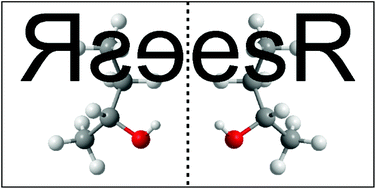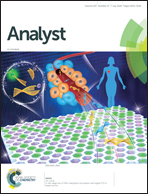Enantioselective Raman spectroscopy (esR) for distinguishing between the enantiomers of 2-butanol†
Abstract
The first experimental application of enantioselective Raman spectroscopy (esR) is demonstrated using the example of the chiral alcohol 2-butanol. Samples of the neat enantiomers and the racemic mixture were analyzed in a self-built Raman set-up. The Raman spectrum allows the discrimination of the chemical species. It is shown that the optical rotation of a Raman peak with a small depolarization ratio can be measured. In addition, without any sample modification, e.g. chiral solvent, the enantiomers are distinguishable at a suitable half-wave retarder angle detecting only the vertically polarized component of the Raman signal.

- This article is part of the themed collection: Analyst Recent HOT articles


 Please wait while we load your content...
Please wait while we load your content...